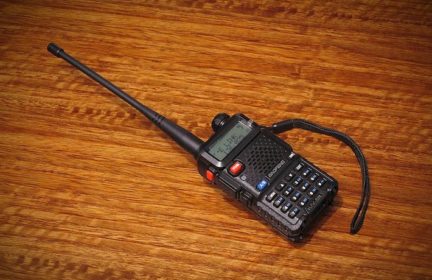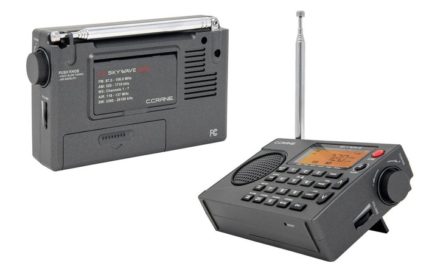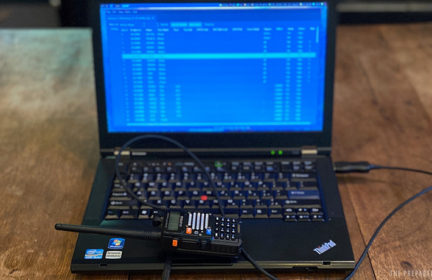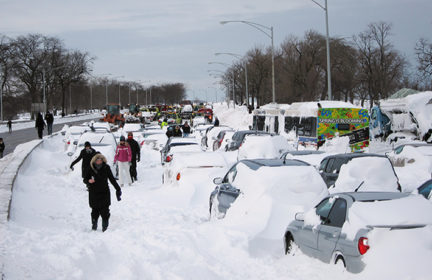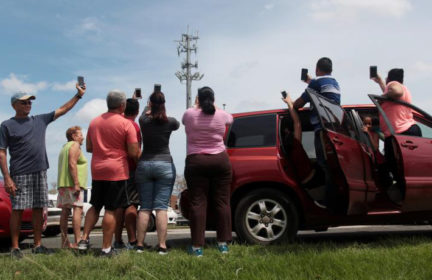-
Best Replies
Uhlan Uhlan - June 25, 2020
Earlier this year I decided to try out several of the latest emergency crank radios to figure out if there were any viable options in this class. Previously I’d consciously avoided getting one because the early ones had a reputation for being more gimmicky than useful.
I focused my selection to radios with a lithium ion rechargeable battery, as there’s no compelling reason to rely on NiMH chemistry in survival gear, in my opinion. Ideally I’d like to see a replaceable 18650 Li cell on the rechargeable side, with a separate AA battery bay for backup.
The radio that hit the most high points for me was the Midland – ER310. It’s intuitive to use, has a replaceable 18650 lithium cell (probably the best portable power source out there), as well as a backup bay for for 3 AA cells. The crank and solar works well, and the radio reception is good enough, plus you can listen to the radio while the weather alert is activated (many cannot monitor weather alert while actively listening to other radio stations). Like most radios in this category it can charge other devices, or be charged, via the ubiquitous USB standard. Basically, the ER310 puts the “emergency” in emergency radio, in my opinion. Store it with half a dozen AA Energizer Ultimates (which you really need to be stockpiling, anyways) and it’s ready to go to work when the SHTF. Priced ~$60
My second choice, the Sangean MMR-88, actually breaks several of my criteria but the small size and superior radio reception and sound quality is compelling to me. It uses a small oddball replaceable Li cell and lacks a secondary bay for AA power backup. It also cannot simultaneously monitor weather alerts when actively listening to the radio. But if you’re more interested in the “radio” aspect of emergency radios this one is hard to beat. Paired with an AM loop antenna and I pull in nighttime stations from 1000 miles away almost as good as my big AM DX radios costing 2-3 times as much. Priced ~$55
My third choice is this fugly Tiemahun, a remarkably capable radio stuffed into a sexy quart-sized antifreeze container. There are several other brands that look the same, most notably from Kaito (which I wouldn’t recommend due to having to send all three of my samples back to Amazon because they wouldn’t work). This is a bare-bones product that does a lot of different things adequately enough that you might actually want to give it some consideration. It does have an 18650 Li cell, but it’s soldered onto the board, and thus not easily replaceable, so you’re out of luck if you want to use the same cells as your high power flashlights. It also has a AAA secondary battery bay (despite having plenty of space to accommodate AA), which isn’t great when you consider that the AAA Energizer Ultimates Ah/$ is significantly lower than the AA equivalent. However, that might not be as big a deal for some as it is for me. It also is all analog controlled (although the actual internal tuning is digital) with a very small dial that is hard to read and thus not as quick to use. Finding a specific station is going to require some careful hunting and listening for station identification and there’s obviously no memory presets that allows for quick jumping between stations. It does, however, actually tune in a portion of the SW band, although you’re probably going to need to clip on 10′ of wire to the antenna to pick up much. With the wire attached I was consistently able to tune in the WWV shortwave time stations, which also provide emergency alerts during nationwide crises. Also, it has a MicroSD slot for audio playback of MP3 files (it does not record like some of the similar Kaito models). Another nice feature is that, in addition to the flashlight at the front, it has an area light on the back which illuminates a room and doesn’t suck a lot of power in the process. As cheap as it looks and feels, every thing on this radio actually does work well enough to be useful in an emergency. Priced ~$30, although the identical iRonsnow IS-399 is ~$35.
Based on my experience, I was disappointed with the following radios:
The Eton NFRX5 Sidekick has no redeeming qualities beyond it’s appearance, especially when you consider it’s $80+. It’s not intuitive to use (it’s the only one I had to read the manual to get working), the controls are awkwardly placed, the display is tiny and dim, the battery capacity is a joke (especially if you use the area light on the back panel), and the radio reception and sound is subpar. It’s a cool SHTF movie prop, though.
There are multiple brands selling emergency radios in this triangular package, my sample is a RunningSnail. The only redeeming feature for me is the big bright display and the fact that it holds two 18650 cells, but the radio reception and sound is so bad that I didn’t want to use it. Maybe this would work for someone more interested in the rechargeable power capacity rather than the radio. Mine cost ~$45.
In the samples that I tested, 4 out of the 5 Kaito emergency radios I tried didn’t work properly and had to be returned to Amazon. I rarely return stuff, it has to be obviously defective for me to justify sending it back. I still have the above two, even though I hate them, but these Kaitos had to go back because they just didn’t work. So I’m really hesitant to recommend the brand at this point.
-
Comments (13)
-
Bigwig - May 30, 2020
I have several older models of various brands but not particularly fond of any of them. You might want to look into the Eton brand that they make for the Red Cross. If you can find any Freeplay radios, they have great wind-up capabilities. Look for those with multiple power options, especially wind-up with a build-in battery but can take regular batteries as well. You could include solar but most are too small to be efficient. An inexpensive alternative is to buy a low-cost handy talkie (HT) like the Baofeng UV-5R+ or similar. It has the ability to receive any of the NOAA weather channels. Just don’t transmit on it until you get a ham radio license.
-
Matt Black - June 3, 2020
@MrsG
Just before this pandemic hit, I started my journey into ham. (It was on my prep ‘to do’ list for a long time -too long, so I’m picking up where I left off). Although I’m still in the process of learning the Technician level stuff, have yet to take an exam, or get my license, I have a few thoughts to throw at you:
@Bigwig’s suggestion for an inexpensive hand held ham radio is sound. I just got the Baofeng BF-H8HP as my entry level radio for situational awareness (listening to local police, fire, and EMS broadcasts) and it has access to NOAA weather channels. Again, you want to be sure not to broadcast. Hammies can locate you and the FCC will investigate if you broadcast. (The exception is situations of imminent danger).
Another option you can look into are FRS (Family Radio Service) and GMRS (General Mobile Radio Service) radios, what we commonly think of as “walkie talkies” – the kind you use while hiking, camping, boating (?), etc. These types of radios don’t require licensing and you’re limited to 22 channels and many (eg, Motorola) have NOAA radio frequencies pre-programmed.
Finally, don’t dismiss things like the old school hand crank radios, especially if it gets you to where you want to be, or if budget is an issue. I still have (after all these years) an older Midland crank emergency radio. It can receive AM/FM radio bands and NOAA stations. Additional features include hazard/weather alerts, cell phone charger, freeze warnings, and even a built-in flashlight. Fortunately for you, there are probably better, more efficient or more feature rich options available to you nowadays.
[edits for spelling, grammar, clarification] -
Friend of the Pod - June 23, 2020
Plus one on using the Baofeng to listen to the NOAA channels. Also, the best resource I found for studying for the ham radio license exams is a free site called hamstudy.org.
-
-
Haus Monkey - June 3, 2020
I agree with Bigwig that Baofengs are probably better than spcific NOAA radios, but I personally prefer to have a mix of both.
In terms of NOAA-specific radios I both have the Eton FRX3+ (https://etoncorp.com/products/frx3), which has both a solar panel and a crank to generate power, and the Eton FRX2 (https://etoncorp.com/products/american-red-cross-frx2), which is a more compact version of the FRX3+ (but still has solar and crank). I don’t have any experience with any other radios, but I’m happy with both so far. I keep the larger (but still portable) FRX3+ at home or with me when I camp, and the FRX2 in my BOB. I’ve used both to charge my phone and they’re both fine, with the only difference that the smaller FRX2’s sound is less clear but still ok (it has a shorter antenna so I guess that’s the difference).
-
Zabeth - June 21, 2020
Some people like the emergency radios made by Kaito, which can charge up by solar, battery, hand crank, etc.
Zabeth
-
SeaBee - June 21, 2020
I have a Kaito NOAA emergency radio, purchased years ago at the beginning of prep trajectory. They are cheap and seem reasonably reliable for receiving weather/FM/AM broadcasts. I can’t comment on the hand-crank and phone-charging capabilities, as I haven’t bothered to test those yet.
Like Matt Black, I’m underway for my ham Technician license. I’ve also got a Baofeng 8 watt handheld, and am using Michael Burnette’s The Fast Tract to your Technician Class Ham Radio License book (available on iBooks and probably elsewhere). I’m a teacher and reasonably literate, and I’m really pleased with the structure and flow of the book. It is A LOT of information though, and The Prepared’s Ham Radio intro guide is a must-read before making any purchases. Ham is super interesting, but it is also really serious shit.
I’ll add to what’s been said above re: monitoring ham frequencies: unlike the emergency radios, it is not simply a matter of turning on your ham handheld and monitoring broadcasts. You will need some level of device proficiency and frequency awareness in order to adequately find information in a crisis or, situation warranting, broadcast in an emergency without a license.
-
Matt Black - June 23, 2020
@SeaBee, thanks for the tip about Michael Burnette’s book. I’ll be checking that out later today. I have the AARL Technician guide and as much as that makes sense (a lot) it could be better organized. It could use a lot more polish and shine.
-
SeaBee - June 24, 2020
The Burnette book isn’t organized intuitively at first glance, from the perspective of a total newcomer. However, as I’ve worked my way through it, I realize that he’s staggered the different pieces to help the reader develop a nice, conceptual-based understanding of ham. Also, he frames much of his discussion around the different questions on the exam. Good stuff, but it’s a lot. Haven’t seen the AARL stuff yet, definitely need to check that out.
-
Friend of the Pod - June 24, 2020
I prepared for the Technician and General license exams using only the AARL books, and https://hamstudy.org (a free site). The exams were a piece of cake. The day I took them, a 10 year old girl who was there passed the Technician and General exams too.
-
-
Uhlan - June 25, 2020
Earlier this year I decided to try out several of the latest emergency crank radios to figure out if there were any viable options in this class. Previously I’d consciously avoided getting one because the early ones had a reputation for being more gimmicky than useful.
I focused my selection to radios with a lithium ion rechargeable battery, as there’s no compelling reason to rely on NiMH chemistry in survival gear, in my opinion. Ideally I’d like to see a replaceable 18650 Li cell on the rechargeable side, with a separate AA battery bay for backup.
The radio that hit the most high points for me was the Midland – ER310. It’s intuitive to use, has a replaceable 18650 lithium cell (probably the best portable power source out there), as well as a backup bay for for 3 AA cells. The crank and solar works well, and the radio reception is good enough, plus you can listen to the radio while the weather alert is activated (many cannot monitor weather alert while actively listening to other radio stations). Like most radios in this category it can charge other devices, or be charged, via the ubiquitous USB standard. Basically, the ER310 puts the “emergency” in emergency radio, in my opinion. Store it with half a dozen AA Energizer Ultimates (which you really need to be stockpiling, anyways) and it’s ready to go to work when the SHTF. Priced ~$60
My second choice, the Sangean MMR-88, actually breaks several of my criteria but the small size and superior radio reception and sound quality is compelling to me. It uses a small oddball replaceable Li cell and lacks a secondary bay for AA power backup. It also cannot simultaneously monitor weather alerts when actively listening to the radio. But if you’re more interested in the “radio” aspect of emergency radios this one is hard to beat. Paired with an AM loop antenna and I pull in nighttime stations from 1000 miles away almost as good as my big AM DX radios costing 2-3 times as much. Priced ~$55
My third choice is this fugly Tiemahun, a remarkably capable radio stuffed into a sexy quart-sized antifreeze container. There are several other brands that look the same, most notably from Kaito (which I wouldn’t recommend due to having to send all three of my samples back to Amazon because they wouldn’t work). This is a bare-bones product that does a lot of different things adequately enough that you might actually want to give it some consideration. It does have an 18650 Li cell, but it’s soldered onto the board, and thus not easily replaceable, so you’re out of luck if you want to use the same cells as your high power flashlights. It also has a AAA secondary battery bay (despite having plenty of space to accommodate AA), which isn’t great when you consider that the AAA Energizer Ultimates Ah/$ is significantly lower than the AA equivalent. However, that might not be as big a deal for some as it is for me. It also is all analog controlled (although the actual internal tuning is digital) with a very small dial that is hard to read and thus not as quick to use. Finding a specific station is going to require some careful hunting and listening for station identification and there’s obviously no memory presets that allows for quick jumping between stations. It does, however, actually tune in a portion of the SW band, although you’re probably going to need to clip on 10′ of wire to the antenna to pick up much. With the wire attached I was consistently able to tune in the WWV shortwave time stations, which also provide emergency alerts during nationwide crises. Also, it has a MicroSD slot for audio playback of MP3 files (it does not record like some of the similar Kaito models). Another nice feature is that, in addition to the flashlight at the front, it has an area light on the back which illuminates a room and doesn’t suck a lot of power in the process. As cheap as it looks and feels, every thing on this radio actually does work well enough to be useful in an emergency. Priced ~$30, although the identical iRonsnow IS-399 is ~$35.
Based on my experience, I was disappointed with the following radios:
The Eton NFRX5 Sidekick has no redeeming qualities beyond it’s appearance, especially when you consider it’s $80+. It’s not intuitive to use (it’s the only one I had to read the manual to get working), the controls are awkwardly placed, the display is tiny and dim, the battery capacity is a joke (especially if you use the area light on the back panel), and the radio reception and sound is subpar. It’s a cool SHTF movie prop, though.
There are multiple brands selling emergency radios in this triangular package, my sample is a RunningSnail. The only redeeming feature for me is the big bright display and the fact that it holds two 18650 cells, but the radio reception and sound is so bad that I didn’t want to use it. Maybe this would work for someone more interested in the rechargeable power capacity rather than the radio. Mine cost ~$45.
In the samples that I tested, 4 out of the 5 Kaito emergency radios I tried didn’t work properly and had to be returned to Amazon. I rarely return stuff, it has to be obviously defective for me to justify sending it back. I still have the above two, even though I hate them, but these Kaitos had to go back because they just didn’t work. So I’m really hesitant to recommend the brand at this point.
-
John AdamaStaff - June 26, 2020
Another awesome comment @Uhlan! Putting the gear roundup together for these types of radios is on our list for this summer. Would you like to chip in and get credit since you’ve already got a great head start on the knowledge?
-
Uhlan - June 26, 2020
Sure, whatever I can do to help.
-
Friend of the Pod - June 27, 2020
This is terrific information. Thanks for sharing! I’d been looking at these types of radios, but didn’t know where to start.
-
-
- News for the week of 2025-09-01 - 2 days ago
- News for the week of 2025-08-25 - 1 week ago
- News for the week of 2025-08-18 - 2 weeks ago
- News for the week of 2025-08-04 - 1 month ago
- News for the week of 2025-07-28 - 1 month ago
This forum is heavily moderated to keep things valuable to as many people as possible. Full community policies are here. The basics:
- 1. Be nice to each other.
- 2. Stay focused on prepping.
- 3. Avoid politics, religion, and other arguments.
- 4. No unfounded conspiracies, fake news, etc.
- 5. Debate ideas, not people.





